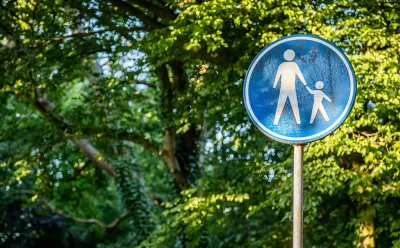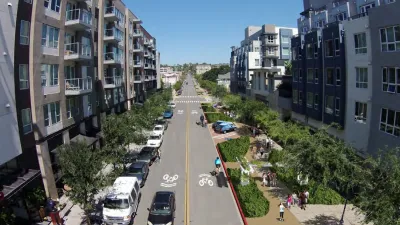How parklets, open streets, and green spaces make cities safer and friendlier for children and families.

In a piece published in Streetsblog USA, Emily Stutts highlights three of the best lessons she drew from a learning tour of Munich and Rotterdam, European cities that have made a conscious effort to make streets safe, comfortable, and welcoming for children and families and in doing so, have made the public realm better for everyone.
For example, spaces like parklets can spur permanent change. “While a parklet might start as a one-day project — perhaps for international Park(ing) Day — these placemaking powerhouses can easily become a permanent or semi-permanent fixture of your school community.”
Open streets, like parklets, offer places where children and families can meet and play safely. For Stutts, “Play is a universal language for connection and happiness, if only we create the space to do so.”
Stutts points out that in the Netherlands, cities have a friendly competition to see who can create the most green spaces on their urban streets. “This same solution could be implemented in school parking lots, driveways, or along side-streets near schools in the U.S., too.”
Stutts believes that “by experimenting with our streets and parking lots, we are allowing ourselves and our students to dream and imagine the kind of world they want to live in.” Starting with schools can spark ideas for broader change across neighborhoods and cities. “The infrastructure supports kids’ independence, safety, playfulness, and joy — while also supporting citizens of all other age groups, too!”
FULL STORY: Three Ways To Reimagine Streets for Kids

Planetizen Federal Action Tracker
A weekly monitor of how Trump’s orders and actions are impacting planners and planning in America.

San Francisco's School District Spent $105M To Build Affordable Housing for Teachers — And That's Just the Beginning
SFUSD joins a growing list of school districts using their land holdings to address housing affordability challenges faced by their own employees.

The Tiny, Adorable $7,000 Car Turning Japan Onto EVs
The single seat Mibot charges from a regular plug as quickly as an iPad, and is about half the price of an average EV.

As Trump Phases Out FEMA, Is It Time to Flee the Floodplains?
With less federal funding available for disaster relief efforts, the need to relocate at-risk communities is more urgent than ever.

With Protected Lanes, 460% More People Commute by Bike
For those needing more ammo, more data proving what we already knew is here.

In More Metros Than You’d Think, Suburbs are Now More Expensive Than the City
If you're moving to the burbs to save on square footage, data shows you should think again.
Urban Design for Planners 1: Software Tools
This six-course series explores essential urban design concepts using open source software and equips planners with the tools they need to participate fully in the urban design process.
Planning for Universal Design
Learn the tools for implementing Universal Design in planning regulations.
Smith Gee Studio
City of Charlotte
City of Camden Redevelopment Agency
City of Astoria
Transportation Research & Education Center (TREC) at Portland State University
US High Speed Rail Association
City of Camden Redevelopment Agency
Municipality of Princeton (NJ)





























